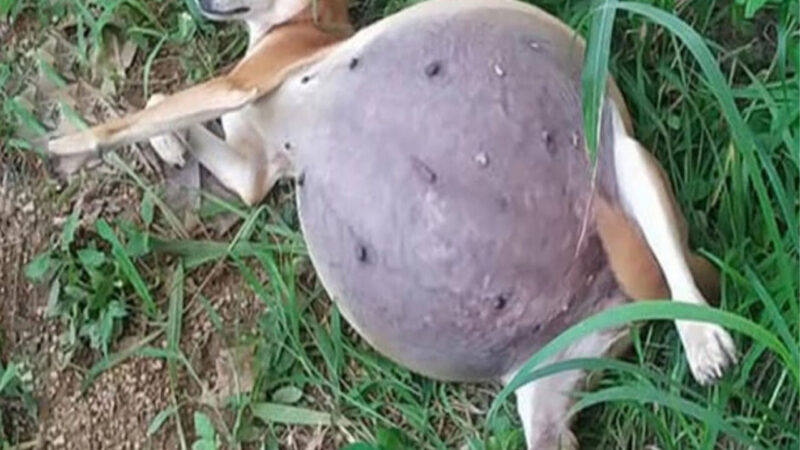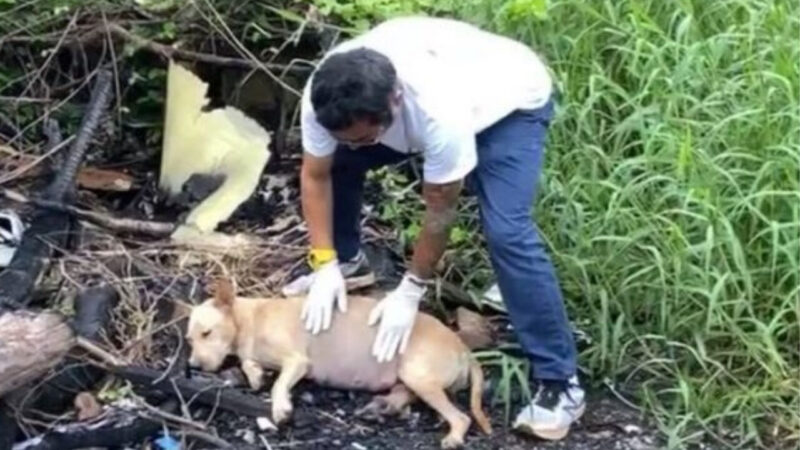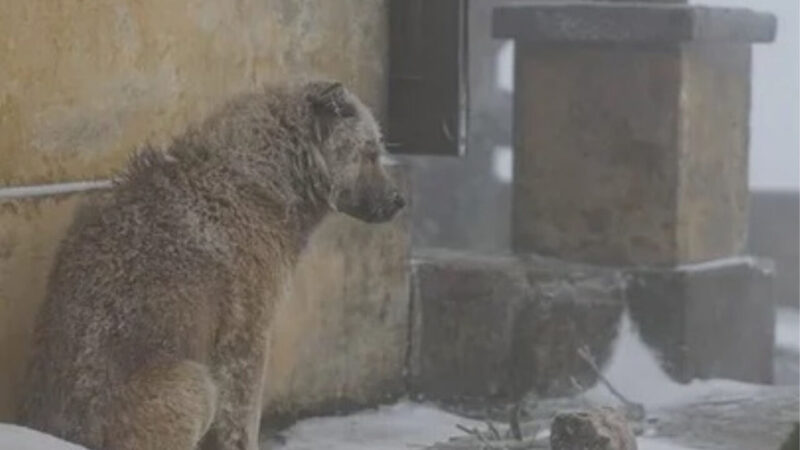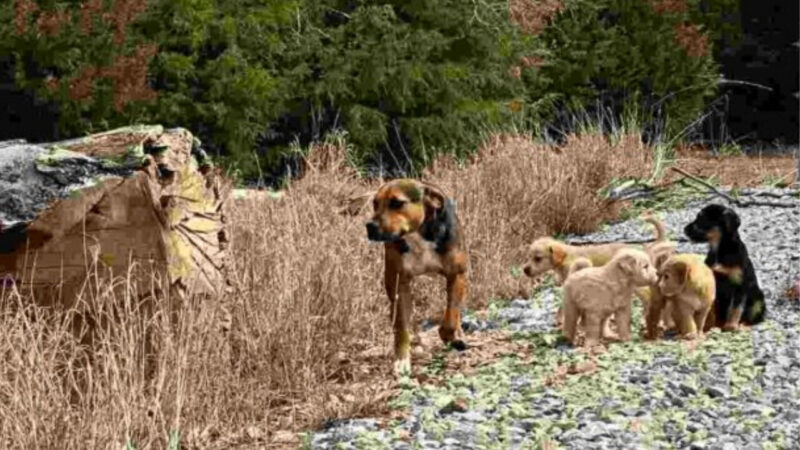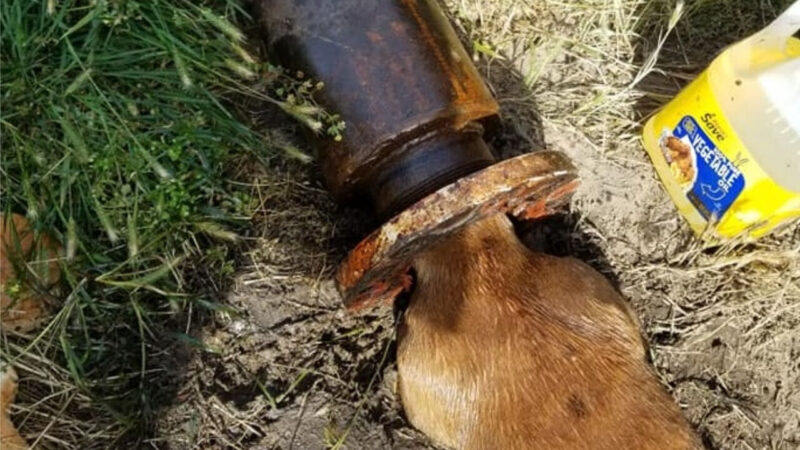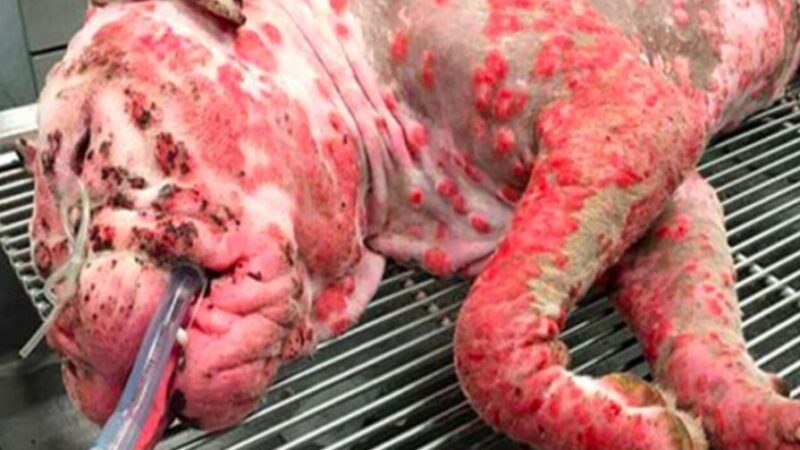Stray Puppy Becomes UABC’s Beloved Mascot, Bringing Joy and Unity to Campus Community

At the Autonomous University of Baja California, a student’s act of kindness in rescuing a stray puppy has united the campus community and turned the puppy into a cherished symbol of joy and togetherness. Dubbed “the university dog,” this beloved canine now thrives in a supportive environment, bringing smiles and comfort to students and staff alike.
At the Autonomous University of Baja California (UABC) in Ensenada, Mexico, a touching story has emerged, capturing the hearts of students and staff.
A student’s simple yet powerful gesture to rescue a stray puppy has not only given the little dog a new home but has also brought the campus community closer together.
Affectionately dubbed “the university dog” by fans on TikTok, this once-homeless puppy now enjoys the embrace and warmth of a supportive community.
Despite initial hesitations about having an animal on campus, his arrival has been met with enthusiasm and joy.
Students frequently take breaks from their busy schedules to play and cuddle with him, enjoying his presence as a source of comfort and happiness.
Particularly loved by the athletes, as shown in the videos shared by the TikTok user babyraccon1, the vibrant puppy easily captures everyone’s attention with his cheerful antics.
His playful demeanor serves as a delightful escape from the pressures of academic life, promoting well-being and camaraderie among students.
This heartening example highlights the power of kindness. Thanks to one student’s thoughtful act, the puppy has not only found a caring home but has also become the unofficial mascot of UABC.
His journey from a stray to a beloved figure on campus beautifully illustrates how compassionate actions can significantly impact lives, uplifting spirits and fostering a sense of unity.
He now strolls freely around the campus grounds, tail wagging and ears perked up, often seen napping under shady trees or trotting alongside students on their way to class. Professors and administrative staff have also embraced his presence, sometimes pausing their work just to greet him or sneak him a treat. It didn’t take long before someone knitted a tiny green sweater in UABC colors for him, which he proudly wears during chilly mornings—making him an even more familiar and beloved sight across the university.
As his popularity grew, students began organizing small events around him. During exam weeks, the “puppy break” sessions became a regular feature—moments where students could spend a few calming minutes with him, helping to ease stress and anxiety. Mental health advocates on campus even praised the initiative, noting a visible improvement in student morale during high-pressure academic periods. His calming presence became more than a distraction—it was a source of healing.
The dog also inspired a wave of volunteerism among the students. Encouraged by his story, many began supporting local animal shelters or volunteering in pet adoption drives. Clubs were formed focusing on animal welfare, and seminars on responsible pet ownership and animal rights were organized—drawing large, engaged audiences. What began as a single rescue turned into a broader movement of compassion and awareness.
Social media continued to play a significant role in the puppy’s rising fame. The account babyraccon1 documented his daily adventures: from chasing butterflies in the courtyard to lounging in lecture halls beside dozing students. One viral video, where he gently nudges a tired student’s hand during a night study session, received thousands of likes and heartfelt comments praising the unexpected emotional support he offered. The comments were filled with messages like, “This dog is exactly what I needed to see today” and “UABC is lucky to have such a gentle soul roaming its halls.”
Faculty members, too, noted the change in campus atmosphere. There was a new sense of openness and warmth. The dog’s presence seemed to blur the invisible lines between departments, grade levels, and even students and staff. Conversations sparked over shared admiration, and more smiles seemed to surface around every corner. He had unknowingly become a gentle force of connection, a tiny heartbeat in the rhythm of university life.
His favorite spot, it seemed, was the campus courtyard near the library. Students often found him stretched out on a patch of grass there, sunbathing peacefully while groups studied nearby. Some would even bring him snacks—always ensuring they were dog-safe—while others carried extra water bottles just in case he was thirsty. Despite being collectively cared for, there was a surprising sense of organization: one group ensured he was fed, another monitored his health, and a few veterinary students even took turns checking on his condition.
One afternoon, a particularly touching moment occurred when a first-year student, overwhelmed by homesickness, sat quietly next to the dog. Without any prompting, the dog snuggled closer and laid his head on the student’s lap. She later shared on social media that it was the first time she had felt truly comforted since arriving at university. That post was shared widely, reinforcing what many had already come to understand—that the dog wasn’t just a campus mascot; he was a quiet, ever-present source of emotional support.
In response to growing affection for him, the university took a step further. A small shelter was built near the student services center—a cozy little space complete with blankets, toys, and a weather-resistant roof. Though he preferred to sleep under the stars or near the lecture halls where students studied late into the night, the shelter was a symbol of the community’s commitment to his well-being. It also served as a reminder of the deeper impact a single act of kindness can have.
Local news outlets eventually caught wind of the story. A few reports were aired showcasing the bond between the dog and the university, drawing admiration from outside the academic circle. Alumni chimed in with messages of support, some even donating to student-run animal care initiatives inspired by the dog’s journey. What had begun as a fleeting moment of compassion was now a story that spanned beyond the campus walls, uniting people around a shared appreciation for empathy and connection.
Perhaps the most remarkable thing was how naturally he fit into university life. He didn’t disrupt classes or cause chaos. He knew, somehow, where to go, when to be gentle, and who needed his comfort the most. Students joked that he had a sixth sense for stress, always appearing right when someone seemed to need a friend. Whether it was walking with a student to their dorm in the rain or sitting quietly next to someone crying after a difficult exam, he always seemed to be in the right place at the right time.
As graduation season approached, many seniors reflected on their years at UABC and mentioned him in their farewell speeches. Some even took graduation photos with him, draping their gowns across his back or holding him close in their caps and gowns. He had become part of their memories, part of their story, and for many, the embodiment of the kindness that defined their university experience.
Even with new students arriving and old ones moving on, his presence remained a constant—an unspoken promise that compassion still lived here, that even in a place of intellectual rigor and ambition, there was room for softness and heart.
In the end, his story is not just about a rescued puppy. It is about how love and care ripple outward. It’s about how a university, through the actions of one compassionate student, found a common symbol of warmth and humanity. And every time he curls up beside a bench, trots across the courtyard, or perks up at the sound of laughter, he quietly reminds everyone around him: sometimes the smallest lives can leave the biggest impact.

